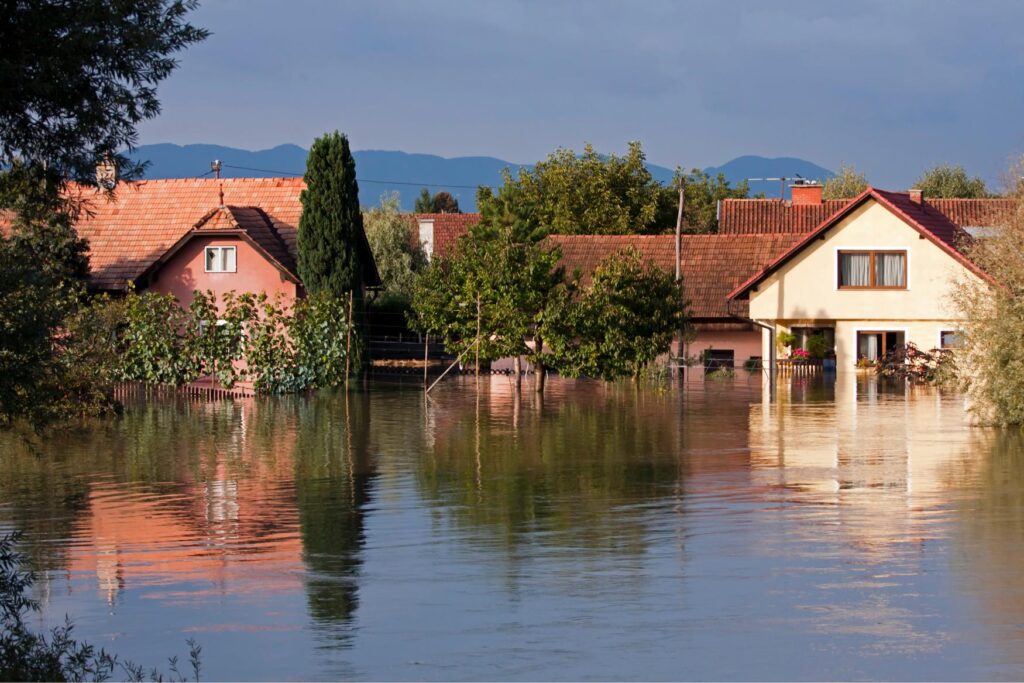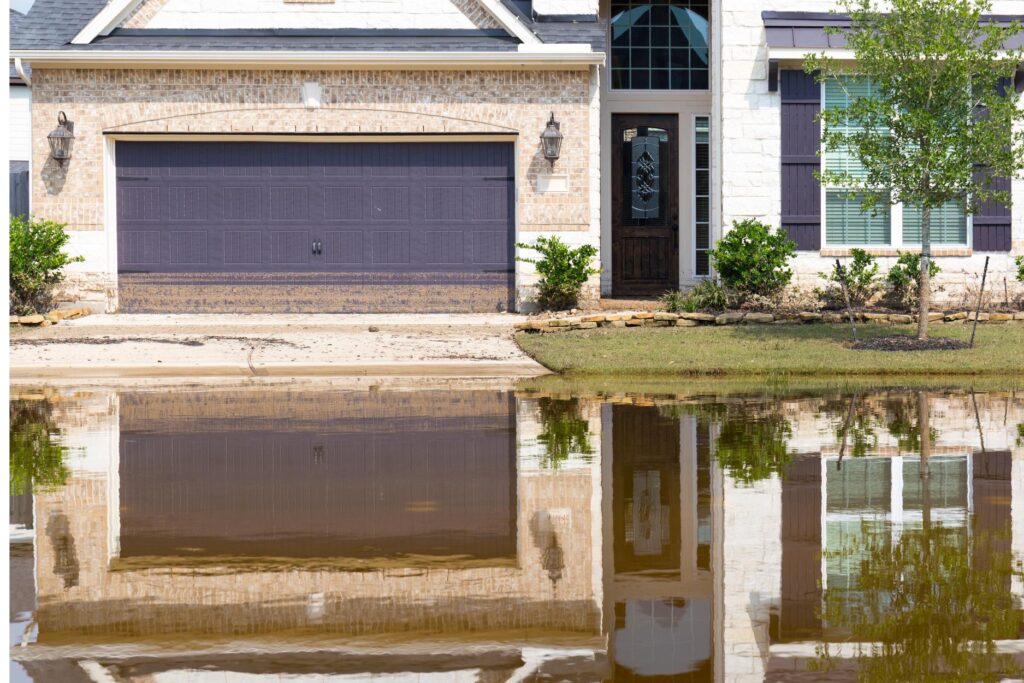Contents
It is important to know how to find inexpensive local water damage restoration companies efficiently and cost-effectively. From evaluating damage to exploring DIY options, there are several strategies to minimize expenses while ensuring proper restoration. Understanding these can make a significant difference when you’re faced with unexpected water issues in your home or business. Let’s explore these seven essential tips.
Key Takeaways
- Research and compare multiple local restoration contractors to find cost-effective services and competitive pricing options.
- Utilize DIY water removal techniques like wet/dry vacuums and dehumidifiers to minimize professional restoration costs.
- Document all damage thoroughly for insurance claims, ensuring you receive proper compensation for repairs.
- Maintain and inspect plumbing systems regularly to prevent future water damage and associated restoration expenses.
- Explore eco-friendly restoration options, which can often be more affordable and sustainable in the long run.
Assess the Damage Immediately
As soon as you notice water damage, it’s important to assess the situation immediately.
Start by identifying the source of the water intrusion—whether it’s a burst pipe, roof leak, or flooding. This damage assessment is vital, as it helps you understand the extent of the issue and prioritize your immediate response.
Check for dampness in walls, ceilings, and floors, and look for any signs of mold growth or structural damage.
Don’t forget to inspect your belongings, as water can severely damage furniture and personal items.
If the damage is extensive, it’s advisable to consult professionals who specialize in water damage restoration. They can provide a thorough evaluation and help you create a detailed recovery plan.
Document Everything for Insurance Claims
To ensure a smooth claims process with your insurance company, documenting everything related to the water damage is essential. Start by taking detailed photos of the affected areas, capturing both the damage and the surrounding environment. Make sure to keep records of any communications with your insurance provider, including names and dates.
Here’s a helpful table to organize your insurance documentation:
| Item | Description | Date Recorded |
|---|---|---|
| Photos | Visual evidence of damage | YYYY-MM-DD |
| Repair Estimates | Quotes from professionals | YYYY-MM-DD |
| Communication Logs | Notes on conversations | YYYY-MM-DD |
| Receipts for Repairs | Proof of expenditures | YYYY-MM-DD |
Explore DIY Water Removal Techniques
When tackling water damage, having the right tools is essential for effective water removal.
You’ll follow a step-by-step process that includes evaluating the damage, extracting water, and ensuring everything is dry, while always prioritizing safety precautions to protect yourself and your property.
Understanding these techniques will empower you to manage water damage efficiently and cost-effectively.
Essential Tools Needed
Having the right tools can make all the difference in effectively tackling water damage yourself. For efficient water extraction, a high-capacity sump pump or wet/dry vacuum is essential. These tools can quickly remove standing water, minimizing damage.
You’ll also need a good assortment of towels and mops to help soak up residual moisture.
Moisture meters are vital for ensuring all damp areas are identified; they help you determine where hidden moisture may linger, potentially leading to mold.
Dehumidifiers are another must-have, as they help reduce humidity levels, promoting faster drying.
Finally, having fans for airflow will accelerate the drying process. Equip yourself with these essential tools, and you’ll be well-prepared to tackle water damage head-on.
Step-by-Step Process
Before diving into the water removal process, it’s vital to ensure your safety and protect your belongings.
Start with a thorough damage assessment to understand the extent of the water intrusion. Document the damage, as this information will be significant for your restoration timeline.
Next, follow these steps:
- Shut off electricity in the affected areas to prevent hazards.
- Remove standing water using a wet/dry vacuum or pump, ensuring you clear any debris.
- Dry the area with fans and dehumidifiers to prevent mold growth.
Safety Precautions First
Although water removal can be a challenging task, prioritizing safety is essential before attempting any DIY techniques.
First, equip yourself with proper safety gear, including gloves, boots, and a mask to protect against contaminants. Verify your workspace is safe by turning off the electricity in flooded areas to avoid electrocution.
Assemble emergency kits that include a flashlight, first aid supplies, and a battery-operated radio for updates. If you’re dealing with significant water intrusion, consider wearing a life jacket, especially in deeper areas.
Always assess the situation carefully; if it feels overwhelming, don’t hesitate to call professionals. Remember, your safety and well-being come first before tackling any restoration efforts.
Choose Local Contractors Wisely
When choosing local contractors for water damage restoration, it’s essential to research their licensing requirements to ensure compliance with local regulations.
Comparing service estimates from multiple contractors will help you understand the market rates and avoid overpaying for services.
Research Licensing Requirements
While addressing water damage, it’s crucial to choose local contractors who hold the necessary licenses and certifications. This ensures they comply with licensing regulations set by local authorities, providing you with peace of mind during the restoration process.
To help you verify their credentials, consider these steps:
Check for state-issued licenses: Confirm the contractor has a valid license for water damage restoration.
Review certifications: Look for industry-specific certifications, such as IICRC (Institute of Inspection, Cleaning and Restoration Certification).
Inquire about insurance: Ensure that they’ve liability insurance to protect you from potential damages
Compare Service Estimates
It’s essential to compare service estimates from multiple local contractors to ensure you get the best value for your money.
Start by gathering at least three detailed estimates, focusing on both cost comparison and service quality. Pay attention to what’s included in each estimate, such as labor, materials, and any potential additional fees. This helps you avoid hidden costs that can inflate your final bill.
Also, don’t hesitate to inquire about the contractor’s experience and customer reviews, as these factors greatly influence service quality.
Look for Discounts and Promotions
How can you maximize your savings during a water damage restoration process? By actively seeking out discounts and promotions, you can greatly reduce your expenses. Many restoration companies offer various discount strategies, especially during specific seasons when demand is lower.
Here are a few ways to find savings:
Check local listings: Websites and social media often feature special offers.
Ask about bulk service discounts: If you need multiple repairs, inquire if the company can provide a package deal.
Sign up for newsletters: Many businesses send exclusive seasonal promotions to subscribers, keeping you informed about the latest deals.
Invest in Preventative Measures
Investing in preventative measures safeguards your property and saves you money in the long run. By incorporating preventative maintenance practices, you can greatly reduce the risk of water damage.
Start with regular inspections of your plumbing system, confirming there are no leaks or signs of wear. Consider using water resistant materials in areas prone to moisture, such as bathrooms or basements. Installing sump pumps can also provide an extra layer of protection against flooding.
Additionally, maintain your gutters and downspouts to prevent water accumulation around your foundation. Verify that your landscaping directs water away from your home.
Prioritize Communication With Restoration Services
Effective communication with restoration services is crucial, as it ensures that all parties are aligned and working towards a common goal: restoring your property efficiently.
Clear dialogue ensures you understand the restoration expectations and can provide essential information. Here are some tips to enhance your communication:
Establish a Point of Contact: Designate a single representative from your side to streamline communication.
Ask Questions: Don’t hesitate to inquire about processes, timelines, and costs to clarify any uncertainties.
Provide Detailed Information: Share all relevant details about the water damage, including its source and extent, to aid in accurate assessments.
Recap
In the end, you might find that avoiding water damage isn’t just about prevention; it’s about embracing the chaos it brings. By quickly evaluating and documenting damage, employing DIY techniques, and wisely choosing local contractors, you can tackle restoration without breaking the bank. Ironically, the more proactive you are today, the less you’ll need to restore tomorrow. So, gear up, stay vigilant, and remember that a little effort now can save you a lot of trouble later.




